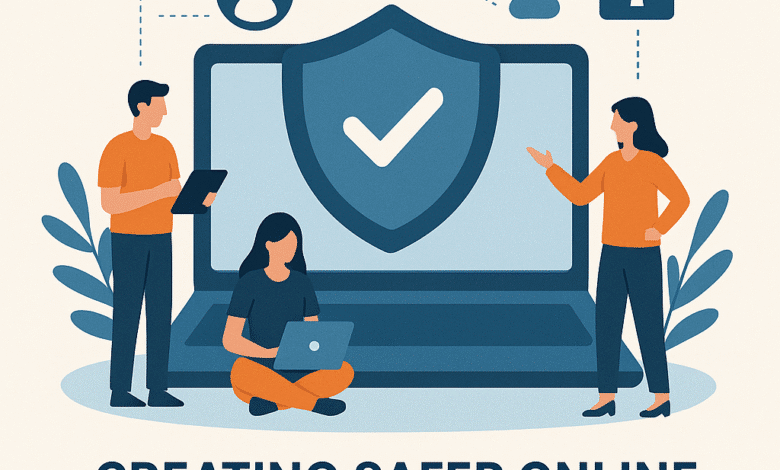From AI to Education: Creating Safer Online Communities Through Innovation

In an age where social interaction blurs physical borders, online platforms are the new public arena. But alongside the benefits of connection lie threats like cyberbullying, hate speech, AI-generated misinformation, and extremist content. The only path forward? Innovative technology combined with human-centered design, policy, and collective will.
The Growing Crisis: Why Now?
- Cyberbullying is ubiquitous. Over half of adolescents report being targeted online, and 70% of teens have witnessed these incidents. The mental health impact is stark—a higher chance of anxiety, depression, and self-harm.
- Targeted harassment is rising. In Australia, cyberbullying reports have surged 455% over five years, especially impacting early secondary school students.
- Generative AI fuels new threats like deepfakes and synthetic content—broadening vectors for manipulation and abuse.
- The scale is staggering. Billions of posts daily across platforms—this volume overwhelms traditional moderation methods.
Clearly, innovation isn’t just beneficial—it’s vital.
Cutting-Edge Innovation in Practice
AI-Powered Mod & Content Scoring
- Constructive-content classifiers, like those from Google’s Jigsaw, assign scores for nuance, civility, compassion—shifting focus from what to remove to what to elevate.
- Real-time hate-filtering at events, such as Paris’s French Open, uses multilingual AI to neutralize over 5% of abuse instantly—protecting players’ mental health.
Hybrid Human + Machine Approaches
- Automated moderation with human oversight is proving its worth—platforms like Facebook show that algorithmic deletion of toxic comments significantly reduces future violations.
- Experts echo: AI scales speed and reach, but nuanced cases require human judgement (e.g. context understanding, cultural sensitivity) .
Proactive & Predictive Moderation
- Academic experiments on Reddit show that “bad-actor” communities can be identified months in advance, enabling timely intervention before chaos ensues.
- On platforms like Wikipedia, real-time indicators help moderators steer conversations away from negativity before it escalates .
Youth-Centered & Open Tools
- UNICEF’s Kindly API flags bullying intent in real-time chat, empowering children to self-correct harmful text—an open-source tool to scale across countries.
- The ROOST initiative, backed by Google, OpenAI, Discord, and Roblox, is releasing open-source AI for detecting and reporting child sexual abuse material—knitting innovation and transparency.
Beyond AI: Ecosystems that Empower
Digital Literacy + Education
- Schools using multi-tiered systems like MTSS combine universal training with targeted support—showing the power of layered care.
- Organizations like Netsafe (NZ) and Insafe (EU) offer resources, hotlines, and digital literacy campaigns backed by governments and educators.
Policy, Regulation & Governance
- Laws like the EU’s AI Act and UK’s Online Safety Act demand risk-assessment, harm mitigation, and transparent moderation policies.
- Platforms are experimenting with internal oversight—e.g. Meta’s Oversight Board labels AI content and emphasizes cultural context in moderation decisions.
Collective Action & Shared Infrastructure
- ROOST’s open toolkit and global collaborations exemplify open innovation—pooling expertise to protect children everywhere.
- Cross-industry research, such as Jigsaw’s classifiers, is being democratized and shared with developers to build healthier digital communities.
Why Innovation Works
| Innovation Aspect | What It Solves |
| Scale & Speed | AI tech scans millions of posts in real-time—humanly impossible. |
| Constructive Design | Elevates civility, not just removes toxicity. |
| Language & Culture | Local language tools like Kindly and regional literacy raise regional efficacy. |
| Transparency & Trust | Open-source frameworks (ROOST, Kindly) encourage scrutiny and ethical use. |
| Proactive Protection | Predictive tools pre-empt negative dynamics before they erupt. |
Actionable Roadmap
- Embed AI moderation across platforms, with human checks to reduce bias and ensure empathy.
- Fund open-source safety tools like Kindly and ROOST to enable global reach.
- Launch cross-sector alliances—tech firms, NGOs, govs—to co-develop frameworks, threaten frameworks, share data and best practices.
- Educate relentlessly—digital literacy programs, workshops, school curriculums and community campaigns.
- Enforce policy responsibly—design regulations that compel robust safety, transparency, and accountability.
Final Thoughts
Creating safer online communities is not a solo mission—it’s a collective, innovation-powered ecosystem, where AI, education, policy, and open collaboration coalesce.
As Uniindia explores this digital trend, the message is clear: forging healthy digital environments demands more than moderation—it needs empathetic innovation, foresight, and shared responsibility to shape a future where everyone can connect online with safety and dignity.





